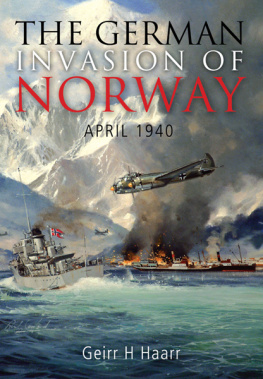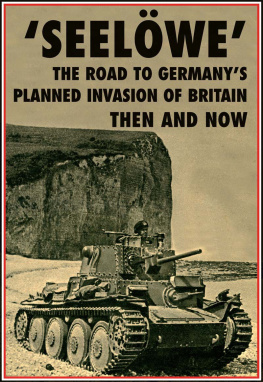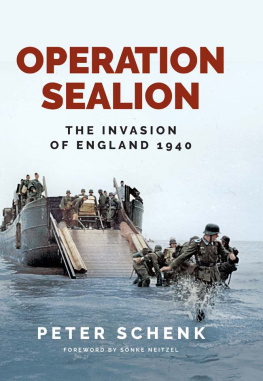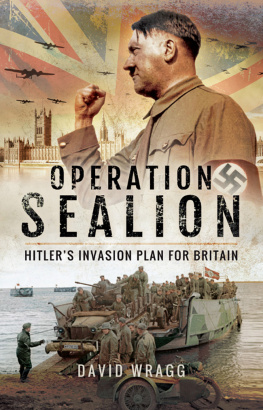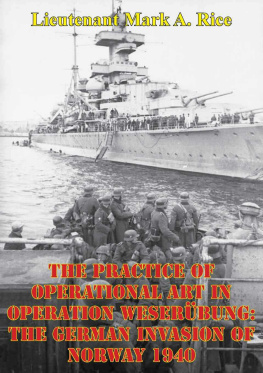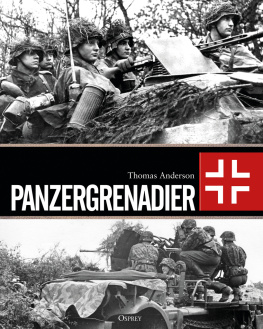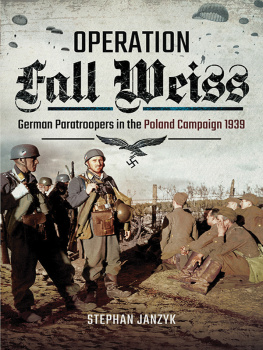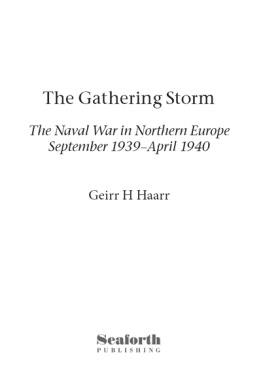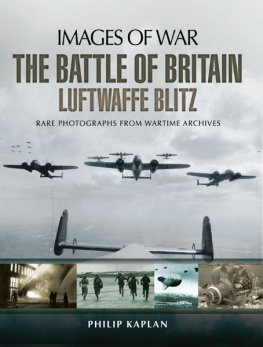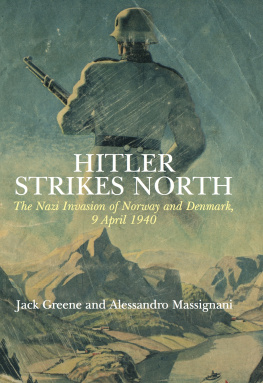To my father
In Norwegen kreuzen sich drei groe Kraftlinien:
Die deutsche, die russische und die englische.
In Norway, three great power lines cross:
the German, the Russian and the British.
Dr Heinrich Sahm,
German minister to Norway, 1938
Copyright Geirr H Haarr 2009
First published in Great Britain in 2009 by
Seaforth Publishing,
Pen & Sword Books Ltd,
47 Church Street,
Barnsley S70 2AS
www.seaforthpublishing.com
British Library Cataloguing in Publication Data
A catalogue record for this book is available from the British Library
ISBN 978 1 84832 032 1
PAPERBACK ISBN: 978 1 84832 089 5
PDF ISBN: 978 1 78346 501 9
EPUB ISBN: 978 1 78346 967 3
PRC ISBN: 978 1 78346 734 1
All rights reserved. No part of this publication may be reproduced or transmitted in any form or
by any means, electronic or mechanical, including photocopying, recording, or any information
storage and retrieval system, without prior permission in writing of both the copyright owner and
the above publisher.
The right of Geirr H Haarr to be identified as the author of this work has been asserted by him in
accordance with the Copyright, Designs and Patents Act 1988.
Typeset and designed by JCS Publishing Services Ltd, www.jcs-publishing.co.uk
Printed and bound in Great Britain by MPG Books Group
Contents
Acknowledgements
MANY PEOPLE HAVE CONTRIBUTED to this book, some from a lifetime of their own research, others with a small but important detail. Their contributions are highly appreciated.
Above all, the altruistic help and support from Robert Pearson of Ipswich, England, is gratefully acknowledged. Were it not for him, this project would have been shelved a long time ago. David Goodey, Reinhard Hoheisel-Huxmann, Erling Skjold and Andrew Smith are also thanked sincerely. Without their help and support nothing would have been achieved.
John Ballam, Ronald Crocker, Albert Goodey, Bernhard Hallis, Vic Hiscock, Dagfinn Kjeholt, Derek Morris, Jan Reimers and Wilfred Robbie Robinson were all there in 1940 and some sixty years later gave me the privilege of taking part in their thoughts and memories. Often sad, sometimes troubled, but inevitably low-key and with an understatement I could not fully fathom, they spoke of the little things that are not in the reports. Many have crossed the bar since and precious few are left. Let us never forget them or their mates.
The efficient staff at Sola Folkebibliotek, my local library, deserve great thanks. There is not a single book or document I have asked for they have not been able to find. Also the nameless staffs of the National Archives at Kew, Bundesarchiv in Koblenz and Freiburg, and Riksarkivet in Oslo deserve thanks for patience and professional dedication. The Naval Museum in Horten and Nordland Rde Kors Krigsminnemuseum (War Museum) in Narvik are thanked for enthusiastic support.
Julian Mannering at Seaforth Publishing deserves great thanks for believing in me and giving me the deadlines I needed. Without his support the project might never have seen completion.
Frank Abelsen, Dag-Jostein Andressen, John Asmussen, Bill Bartholomew, Keith Batchelor, ystein Berge, Jostein Berglyd, Alexander Dietzsch, Tore Eggan, Ivar Enoksen, Nicole Granholt, Peter Harrison, Pamela Jacobsen, Tor Jevanord, Svein Aage Knudsen, Ernst Knutson, Sonia Law, George Malcomson, Oddvar Naas, Finn Nesvold, Tor demotland, Simon Partridge, Paul Sedal, Halvor Sperbund, Ian Thomas, Ulf Eirik Torgersen, Trond Erik Tveit, John Warburton-Lee, Alister Williams, Ingrid Willoch, Ellen Margrete Willoch, Kre Willoch and Atle Wilmar all deserve acknowledgement.
Last, but not least, thanks to my beloved wife Gro, for allowing me to share my passion for her with that for history; listening patiently when I needed to discuss some detail and skilfully distracting me when I needed to relax.
Geirr H Haarr
Sola, Stavanger, May 2009
Introduction
THIS BOOK DOCUMENTS THE German invasion of Norway in April 1940 (Operation Weserbung), focusing on the events at sea. The objective is to give a balanced and factual account; readable but without compromising the demand for research and accurate detail.
As far as possible, the narrative has been based on primary sources. There is still an overwhelming amount of detail and anybody having information that would lead to modifications or improvements are more than welcome to contact me. The research material has come in many languages: Norwegian, German, English, Swedish, Danish and French. All translations into English are my own responsibility and where necessary I have striven to maintain the significance of what was said or written rather than create a word-by-word translation.
The military impact of Operation Weserbung has largely been overshadowed by the events on the Western Front and the fall of France, but there is no doubt that the invasion of Norway and the subsequent campaign had a significant influence on WWII in Europe. On paper, Germany had made a move of great strategic significance, breaking the British blockade of the North Sea and opening a potential to strike out towards the Atlantic. Lacking the resources to capitalise on the gains though, the conquest instead became a burden. The surface arm of the German Navy was small before the operation; afterwards it was crippled virtually beyond recovery. There were insufficient resources available to develop the full potential of the Norwegian bases and through the loss of many large surface ships the Kriegsmarine was, in reality, converted to a navy of small ships, incapable of even considering reaping any strategic gains from the venture. The Norwegian U-boat bases were of limited value compared to those on the French coast that became available very shortly after the Norwegian ones.
Nevertheless, Hitler and his senior staff were strengthened by Operation Weserbung and in spite of grave losses, the Fhrer consolidated his grip on the armed forces, paving the way for the campaigns in the West and in Russia.
The true strategic value of Norwegian territory appeared after the invasion of Russia in 1941, when northern Norway was used as a springboard for the polar front and the air and naval attacks on the supply route to Murmansk neither of which were considered at all in 1940. Even after the attack on Russia it was difficult for the German Navy to find the resources to utilise the Norwegian ports and seaways to their full potential.
The loss of Norway and her territorial waters was in itself not catastrophic for the Allies but it took away an option to outflank Germany at the start of the campaign in France. Ironically, the most persuasive asset for either side prior to the events, the Swedish iron ore, was almost irrelevant afterwards. The supply to Germany continued virtually unaffected through the Baltic, and its strategic value diminished as the iron-ore mines in Lorraine were seized shortly after.
Wheels Within Wheels
Operation Weserbung
THERE WERE NO GERMAN plans whatsoever for an attack on Scandinavia in September 1939. The rationale for Hitler to unleash his dogs of war on Norway and Denmark seven months later developed during the winter through a series of intertwined incidents and processes involving the German fear of being outflanked, Norwegian neutrality policy, and Allied aspirations to sever German iron-ore supplies and to establish an alternative front in Scandinavia.
The first of several catalysts for the development was a visit to Berlin by the Norwegian National Socialist leader Vidkun Quisling in December 1939. He arrived on the 10th to keep abreast of political issues and to try to activate German support for his minority party. Instead, he was willingly entangled in an impromptu plan the consequences of which were out of all proportion staged by Quislings man in Germany, Albert Hagelin. The two men, who had met before, discussed the situation in Norway, which Quisling held had become very anti-German after the alliance with Russia and that countrys attack on Finland.
Next page
